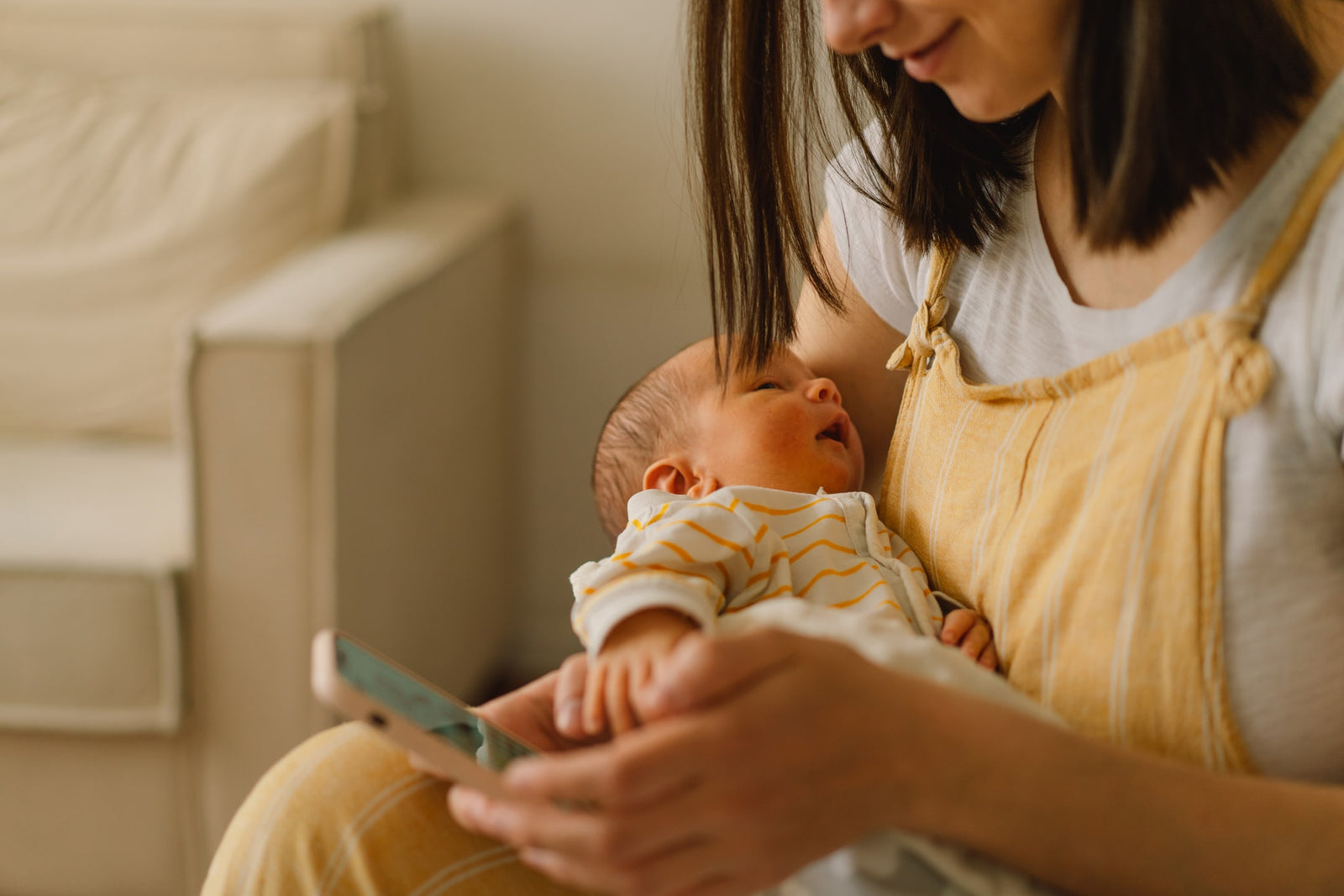White Noise and Baby Sleep Explained

A popular way of getting your baby to sleep or soothing them when they cry is playing them some white noise. But what is white noise and how does it affect baby sleep? We explore!
What Is White Noise?
White noise is actually a mix of different sound frequencies that creates a static-like sound. This noise that spans multiple bands of sound is also referred to as broadband noise or just static in some cases.
Technically, white noise should contain all frequencies across the spectrum of audible sound in equal measure. However, many use the term to describe a range of steady, static-like sounds that can drown out disturbing noises and help you sleep better.
Researchers have studied the impact of white noise on humans and found evidence suggesting it can help reduce crying in babies and support baby sleep.
Learn More About Why Babies Cry At Night!
White Noise vs. Pink Noise
Pink noise isn’t exactly the same as white noise, but it does a similar job when it comes to sleep. You may hear it called ambient noise and it can be described as a steady background hum that blocks out other noises. It may also sound more low and deep than white noise which contains higher pitched sounds.
Many examples of pink noise can be found in nature, such as:
- Steady rain
- Wind
- Waves
- Rustling leaves
Researchers have studied the impact of white noise on humans and found evidence suggesting it can help reduce crying in babies and support baby sleep.
Benefits of Using White Noise with Babies

Various studies have been conducted on the effect of white noise on babies. For instance, one 40-baby study found that white noise helped 80% fall asleep in just 5 minutes while another study found that white noise significantly decreases the duration of crying and increases sleep durations in colicky babies.
Health organizations such as the American Academy of Pediatrics also agree that white noise can be helpful at improving sleep in babies.
White Noise Supports Baby Sleep
Whether it’s due to the soothing effect of white or pink noise on your baby or the fact that it blocks out distracting sounds from outside or other parts of your home, the most obvious benefit of white noise is the fact that it could help your baby fall asleep.
This can be useful if you live in a loud area or if you have other children who are likely to make noise when you’re trying to get your little one down to sleep.
Soothes Fussy or Crying Babies
Some babies respond positively to white noise when they are crying or distressed. Playing some to your little one when they’re cranky or overtired may be just what you need to soothe them gently into a slumber or calm them down enough to initiate other soothing or bedtime routine activities.
Discover Our Top 10 Soothing Techniques for Babies
How to Create White Noise for Your Baby

You can buy a white noise machine online or in certain stores if you want a reliable way to produce white noise before naps or nighttime. There are also many white noise cuddly toy options available today where white noise speakers are placed inside a stuffed animal.
However, there are also other ways to produce white noise for baby sleep, such as installing a fan or playing a white noise track on your phone. YouTube has many white noise playlists available, including a range of heavy rainfall tracks.
How Loud Should White Noise Be?
You don’t want the white noise you play for your baby to be too loud. Based on the findings of the AAP, pediatricians recommend that any white noise machines should be placed at least 7 feet away (200 cm) from your baby’s crib.
Anything above 50 decibels could cause damage to a baby's hearing as well as cause other developmental issues, so always be careful that you don’t automatically leave it on the highest volume setting.
The purpose of white noise is to soothe and distract, rather than overwhelm, so always keep this in mind. If it seems uncomfortably loud to you, then it will no doubt be the same or worse for your little one. Starting low and gradually adjusting it higher to match your baby’s preferences is better than starting at a high volume. You may also want to lower the volume after your child has settled down.
Tips for Incorporating White Noise for Baby Sleep

- Consider adding white noise into your baby’s evening routine so that it helps to trigger an awareness of when they should be winding down for sleep.
- Experiment with different white and pink noise options. Gentle rainfall might work just as well as manufactured white noise from a machine and this may also feel more pleasing to others in your household.
- Try white noise when you are visiting your relatives or staying in a hotel as a way to counteract any changes to their normal routine.
Final Word
We wouldn’t recommend parents using white noise all throughout the day. As infants develop, it’s important for them to get used to other sounds in their environment and pick up on what they mean and where they come from. As white noise tends to block everything out, this can prevent them from doing that.
Equally, it’s not good if your child becomes too dependent on one sleeping aid or technique. As such, use white noise considerately and always be mindful that the ultimate goal for your child is developing complete sleep independence, which is when they can soothe themselves to sleep each night without the need of their parents or various sleep aids.

